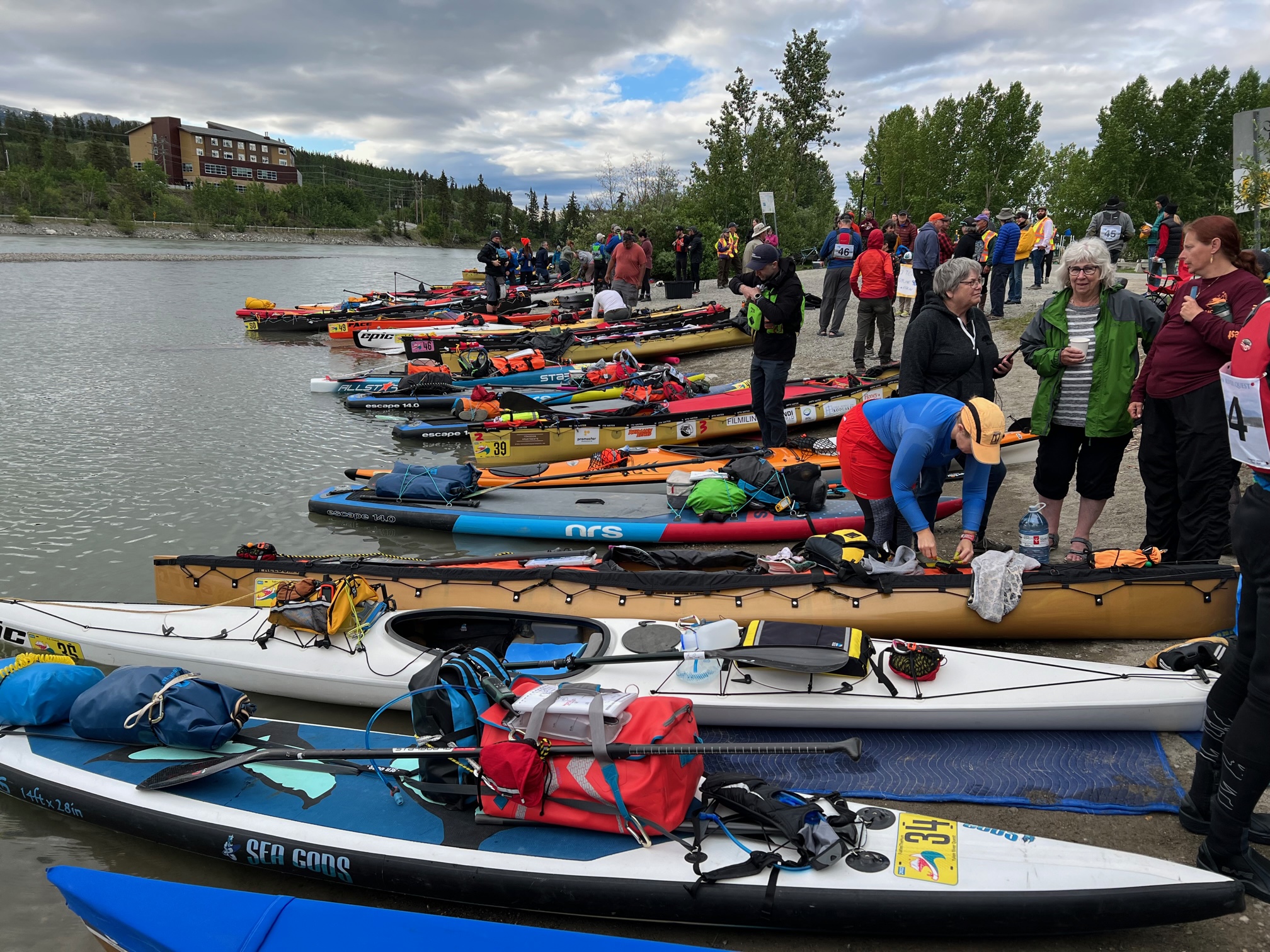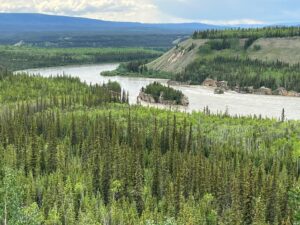The Yukon River Quest
The Yukon river quest is billed as the “toughest kayak marathon race in the world” as well as ‘the race to the midnight sun’! Top racers aiming for speed will finish in 2 days, though others looking only to complete the race take about 4 days.
To give this context if you were to canoe this section of the Yukon on a holiday trip it would take 3-4 weeks.
This year with dangerously high river levels it was extraordinary. Finishers this year deserve a medal! Many entrants pulled out of the race, including myself.
Psychologically the race organisers had set the scene by constantly telling everyone that only experienced wilderness self sufficient paddlers should start the race- they were right. In the race briefing held the day before the event they mentioned that for hundreds of Km’s along the river there is no road access, no rescue teams and if you got into trouble you were on your own.
They also mentioned that no one has died on the event .. yet!
The Yukon river runs south to north and the first big obstacle is the 31 mile long Lake Labarge. The teams crossed this long lake, south to north, and we had northerly winds to contend with for 2/3’s of it. I was 12 hours into the race event (winners finished in 40 hours and I anticipated finishing in about 56 hours) when I decided to stop.
In this year nearly 40% of the field retired before the end of the race.
The high water levels meant danger, particularly for solo kayakers. Firstly, being in Racing kayaks which are more unstable than canoes and secondly as a solo participant, no other person on hand for support if something went wrong. The whole race is 750km long and for hundreds of km’s there is no chance of rescue or recovery. At many points the river is running at 15 km per hour. That’s very fast. With record high water levels this year there were few eddies to stop in to rest. It turned out that for hours of paddling there were no eddies (areas of slack water) and therefore no rest. Also, parts of the race are at night; now this is the land of the midnight, sun but between 12 and 4am there is only a dim light. There was no moon this year either. So you are kayaking at these times in the dark.
Talking to some other competitors, when they did find an eddy to stop in and have a rest, the water level was so high that it was in the tree line so you couldn’t get to the bank to get out of your kayak and have a good rest. Oh and did I mention that the river is cold, full of meltwater.
Mentally you know you’re tired but you can’t stop anywhere to rest. If you fall out of your kayak it is unlikely you could get back in. It’s near dark, you’re in class 2 type rapids. There’s no rescue if you fall into the water. Only the strong or foolhardy survive!
This year the weather produced some heavy showers which chilled competitors so quite a number got hypothermia.
Due to high water levels where other large rivers joined the Yukon there were big ‘boils’. Upwellings of water 10cm above the surrounding water level. These are big patches of unstable water which both push and pull your kayak up down and sideways all at the same time. So literally for hours at a time you are focusing on support strokes whilst moving very fast on challenging waters.
For me I know I made the right decision. It was a privilege to watch some of the finishers come in at the end of the race. They are heroes.
How vast is Yukon and how quickly does the open canoe get swept through the pass?
Now imagine doing this none stop, in a racing kayak, no sleep, no rest, the concentration required, the fatigue, the cold?
What an adventure!


Comments are closed